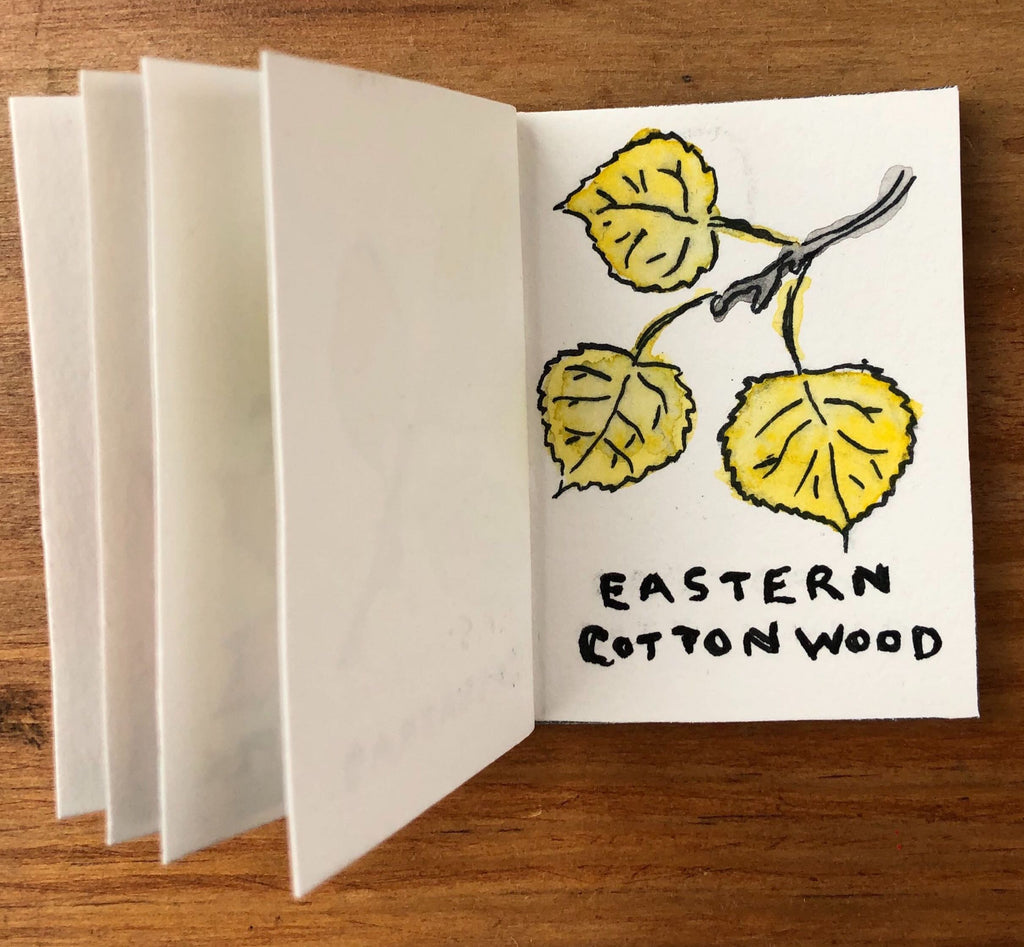Lucy Owl's Leaf Reference Manual: How to Identify Types of Trees by Their Leaves

In the fall when the leaves change color in Hazel Village, the animals become interested in identifying different types of trees by their types of leaves. Fortunately, Lucy Owl is here to help. "Animals,” she intones, "I have collected the key details of common types of trees in this Leaf Reference Manual. I will leave it in the Lodge Library so you can consult it at your leisure."
Our favorite thing about Lucy’s Leaf Reference Manual is her delicate illustrations of the leaves’ fall coloring. We made a leaf guide printable too, so you can color your own and then refer back to it when you’re looking at leaves.
Red Maple

A red maple tree is always a little bit red. In the winter, its buds are red, and its flowers turn red in spring. In the summer, the leafstalks are red and in autumn, its leaves turn a brilliant shade of red. This is a fast-growing tree and is one of the most common ones you can find. Its leaves are usually between 2 and 4 inches tall or wide, and have between three and five lobes (those are the big points on the leaves). The edges are also serrated. Just like its cousin the sugar maple, red maple is used to make delicious syrup.
Sugar Maple

As the seasons change, the leaves of this tree turn vibrant shades of yellow, burnt orange, and red. The leaves can grow up to 8 inches long and wide and usually have five lobes with rounded inner corners. The edges of the leaves are smoother than that of its cousin the red maple! Fun fact: sometimes the bark of the sugar maple is used to make tea!
Sassafras 
This tree is known for its citrus scent! It can grow up to 115 feet tall and is a bit unusual because it often has three types of leaves on the same tree. Some leaves are simple ovals, some are shaped like mittens, and some have three-rounded prongs. In the fall the leaves can turn orange and red. Fun fact: Sassafras is actually a key ingredient in root beer!
American Elm
This tree is sometimes called the Water Elm or White Elm. It can live to be hundreds of years old! The leaves are oval shaped with serrated saw-tooth edges, and can grow up to 8 inches long and around three inches wide. Sometimes in the fall, the leaves turn a darker shade of green, or they can turn a bit yellow.
American Hazelnut

Eastern Cottonwood

This super-fast growing tree has wood that is soft and lightweight. They can grow to be almost 200 feet tall, with a diameter of 9 feet! When the tree is young, it’s bark is lighter in color - almost white, and as it ages, turns grey. The leaves are usually four inches long and four inches wide and resemble a triangle, with rounded corners at the base. In the summer months, the leaves are dark green, but they usually turn yellow in the fall.
Ready to go outside and look for these? Use our leaf printable to guide you and color in your own!
Related Posts: